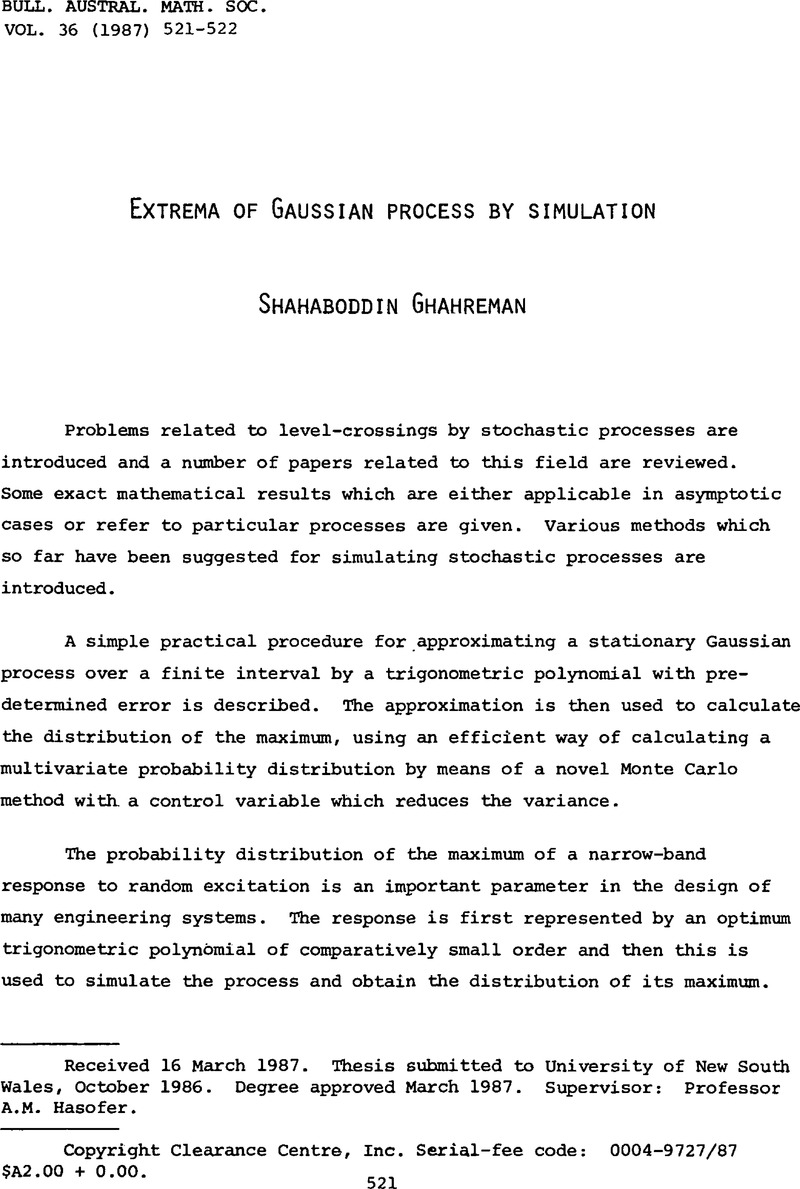No CrossRef data available.
Article contents
Extrema of Gaussian process by simulation
Published online by Cambridge University Press: 17 April 2009
Abstract
An abstract is not available for this content so a preview has been provided. As you have access to this content, a full PDF is available via the ‘Save PDF’ action button.

Information
- Type
- Abstracts of Australasian PhD theses
- Information
- Bulletin of the Australian Mathematical Society , Volume 36 , Issue 3 , December 1987 , pp. 521 - 522
- Copyright
- Copyright © Australian Mathematical Society 1987
References
[1]Hasofer, A.M., “Simple trigonometric models for narrow-band stationary process”, Essays in Statistical Science, J. Appl. Prob. 19A (1982), 333–344.Google Scholar
[2]Hasofer, A.M., “Distribution of the maximum of a Gaussian process by Monte Carlo”, J. Sound and Vibration 112 No.1, (to appear).Google Scholar
[3]Leadbetter, M.R., Lindgren, G. and Rootzen, H., Extremes and related properties of random sequences and processes”, (Springer-Verlag, New York, 1983).Google Scholar
[4]Nussbaumer, H.N., “Fast fourier transorm and convolution algorithms”, (Springer-Verlag, New York, 1982).Google Scholar
[6]Shinozuka, M., “Simulation of multivariate and multidimentional random processes”, J. Acoustical Society of America 49 (1971) 357–368.Google Scholar
[7]Shinozuka, M., “Monte-Carlo solution of structural dymanics”, Computer and Structures 2 (1972) 855–874.Google Scholar
[8]Shinozuka, M. and Jan, C.M., “Digital simulation of random processes and its applications”, J. Sound and Vibration 25 (1972) 111–128.Google Scholar

